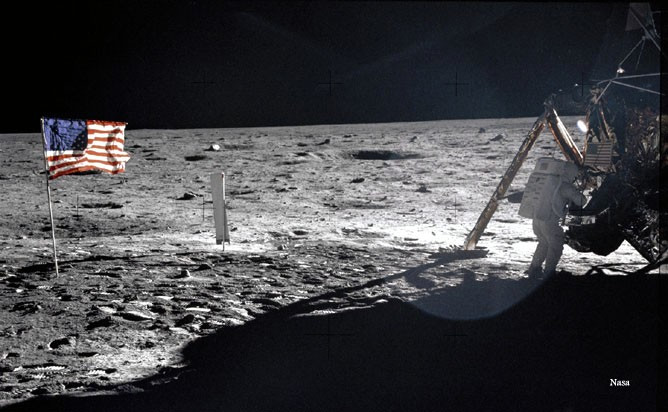Neil Armstrong's Apollo 11: One Giant Leap for Mankind
Neil Armstrong began the giant leap for mankind in space exploration with the Apollo 11 mission

As commander of the Apollo 11 mission, Neil Armstrong united the Earth in wonder when he landed on the surface of the Moon on 20 July 1969, uttering the words, "That's one small step for (a) man, one giant leap for mankind."
The 2,900-tonne Saturn V rocket launched from the Kennedy Space Station in Florida on 16 July 1969, and took four days to land on the surface of the Moon, in a region dubbed the Sea of Tranquillity.
"Houston, Tranquillity base here. The Eagle has landed," Armstrong said on touchdown.
A 38-year-old former Navy pilot, Armstrong was chosen to lead the mission and fulfil a promise made by US president John F Kennedy in 1962, to surpass the Soviet space programme and send a man to the Moon.
On the "most historic telephone call ever made" Richard Nixon, president of the United States in 1969, told Armstrong and his fellow astronaut Buzz Aldrin, "For every American, this has to be the proudest day of our lives."
Armstrong and Aldrin explored the surface of the Moon for around three hours, examining the sand and soil, which he later described as powdered charcoal.
The duo collected samples of rock and soil which were brought back to Earth for study. Their movements on the Moon's surface appeared to be in slow motion due to the planet's low gravity.
"Here men from the planet Earth first set foot upon the moon. We came in peace for all mankind," reads the plaque posted by Armstrong on the Moon, alongside the American flag.
Four days later, on 24 July 1969, the men returned to Earth, making the Apollo 11 mission an unrivalled success in the history of space science.
Just a year later, the Soviets conceded the space race to the Americans.
Six Apollo missions followed, 12 more humans walked on the surface of Moon, but none received the same adulation as Armstrong.
© Copyright IBTimes 2025. All rights reserved.





















